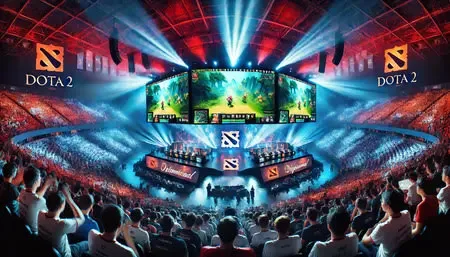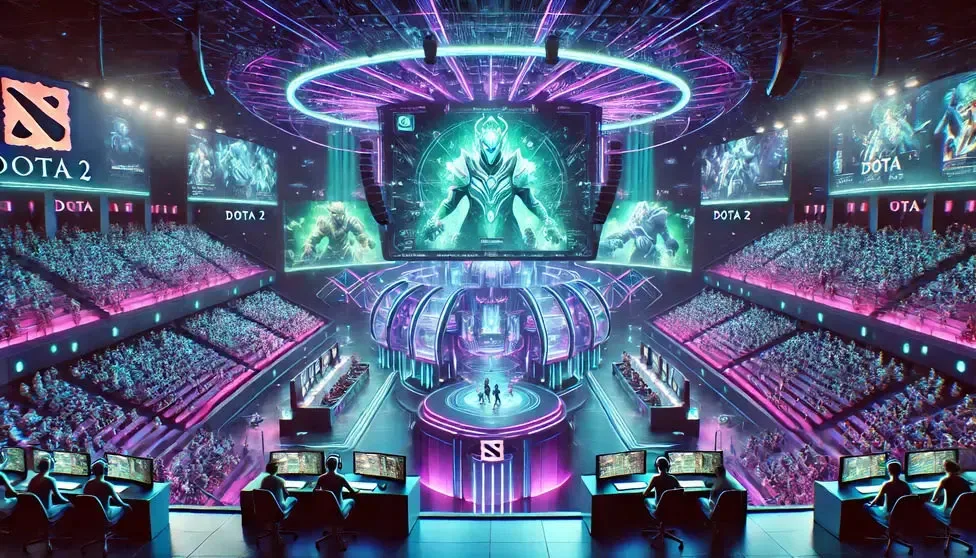Is it possible to foresee the winner of The International?

The International (TI) is the most prestigious Dota 2 tournament, attracting the best teams from around the world. Every year, fans and analysts attempt to predict the next champion, analysing team performances, player statistics, and historical trends. But is it really possible to foresee the winner of this high-stakes event? While some believe in data-driven approaches, others argue that the unpredictable nature of esports makes accurate predictions nearly impossible.
With millions of dollars on the line, betting markets, including platforms such as casino Pasino, offer odds on potential champions. Analysts consider factors like team consistency, player synergy, and patch adaptability to gauge a team’s chances. However, despite these efforts, upsets and surprises remain common at TI, leaving many questioning whether precise forecasting is feasible. To understand this better, we must explore the factors influencing a team’s success and examine past tournament data.
The International – the main event in the world of Dota 2
Since its inception in 2011, The International has grown into the most prestigious esports event, offering record-breaking prize pools and intense competition. Organised by Valve, the tournament gathers the strongest teams who qualify through regional leagues and the Dota Pro Circuit. The event has become a spectacle, watched by millions of fans worldwide, with each edition delivering thrilling moments and unexpected outcomes.
Unlike traditional sports, where dynasties can dominate for years, Dota 2’s evolving meta ensures that no single team maintains supremacy for long. Each iteration of the tournament sees shifts in strategies, hero preferences, and gameplay mechanics, making long-term dominance challenging. This fluidity adds to the difficulty of predicting winners, as teams must continuously adapt to changing conditions.
Factors influencing the success of the team
One of the most crucial aspects of a team’s success at The International is its ability to adapt to the latest patch. Dota 2 is a game that undergoes frequent balance updates, altering hero strengths, item effectiveness, and strategic viability. Teams that quickly master the meta and develop innovative strategies gain a significant advantage. Past champions have demonstrated a deep understanding of patch dynamics, allowing them to outmaneuver opponents with well-prepared drafts and gameplay approaches.
Another key factor is team synergy and communication. Unlike individual-based esports, Dota 2 is highly reliant on coordination and teamwork. Successful teams often have strong bonds, with players who understand each other’s playstyles and decision-making tendencies. Roster stability plays a crucial role, as teams that have played together for an extended period tend to perform better than those undergoing frequent roster changes.
Coaching and analytical support also contribute to a team’s chances at TI. Top-tier teams invest in experienced coaches and data analysts who help refine strategies, identify opponent weaknesses, and optimise draft selections. The ability to study previous matches, detect patterns, and adjust gameplay accordingly provides a competitive edge. Teams with strong analytical departments tend to perform consistently well in high-pressure tournaments.
Mental resilience is another critical factor in determining success at The International. The tournament’s high-stakes environment can lead to immense pressure, causing even top players to falter. Teams that maintain composure, execute their strategies with confidence, and recover from setbacks are more likely to progress through the brackets. Psychological preparation, stress management, and experience in LAN environments all contribute to a team’s ability to handle the tournament’s demanding conditions.
Finally, the unpredictability of the bracket draw and matchups plays a role in determining the winner. Some teams may perform exceptionally well in the group stage but struggle in the main event due to unfavorable matchups. Luck can sometimes influence a team’s path to victory, as a well-placed seeding or an opponent’s miscalculation can change the course of the tournament.
Statistical analyses of past tournament results
Looking at past editions of The International, certain trends emerge that may assist in predicting future champions. Historically, teams with strong performances in the Dota Pro Circuit tend to perform well at TI, though exceptions exist. While dominant teams often carry momentum into the tournament, surprise contenders have also emerged, challenging expectations and defying statistical models.
Win-rate statistics provide valuable insights into team potential. Teams with consistent win rates across multiple tournaments demonstrate reliability and adaptability. However, historical win rates do not guarantee success, as TI’s unique format and pressure-filled environment create variables that standard statistics cannot fully capture.
Another key metric is hero draft analysis. Winning teams often exhibit deep hero pools, allowing them to adjust their strategies based on opponents’ picks. Successful teams also showcase strong drafting capabilities, ensuring they have favourable matchups in crucial games. While data-driven approaches improve forecasting accuracy, they do not eliminate the tournament’s inherent unpredictability.

Opinion of experts and prognosticators
Many esports analysts and former professional players attempt to predict the outcome of The International based on team performances throughout the season. Their insights, often backed by in-depth game knowledge and past experiences, provide valuable perspectives on which teams are best positioned for success. However, even experts acknowledge the challenge of making definitive predictions due to Dota 2’s dynamic nature.
Betting platforms, including Pasino casino, also provide odds based on statistical models, team performances, and betting trends. While odds often reflect a team’s perceived strength, they are not infallible. The unpredictability of TI has led to numerous instances where underdog teams defy expectations, rendering pre-tournament betting predictions unreliable.
Machine learning and AI-driven models have also been employed to analyse tournament data and predict potential winners. These models consider various factors, such as hero pick rates, team compositions, and past performance trends. While AI can enhance predictive accuracy, it cannot fully account for human factors like player mentality, in-game decision-making, or unexpected meta shifts.
Is it possible to predict the TI champion?
Despite extensive analysis, predicting the exact winner of The International remains a daunting task. While historical data, expert opinions, and advanced statistical models offer insights, Dota 2’s evolving nature and the unpredictability of high-stakes matches make definitive forecasts difficult. Even the most well-prepared teams can fall victim to unexpected upsets or unforeseen strategic innovations.
The unpredictability of TI is part of what makes it one of the most exciting esports events in the world. Fans and analysts will continue to speculate, but the true outcome remains unknown until the final moments of the grand finals. Every year, new narratives unfold, with some teams rising to greatness while others falter under the weight of expectations.
While casino Pasino and other platforms offer betting opportunities, even they acknowledge the inherent risks in predicting TI outcomes. The thrill of uncertainty keeps viewers engaged, proving that no matter how much analysis is applied, Dota 2 remains a game of skill, strategy, and unpredictability.



